INTERNAL COLONIZATION
0/5
While post- and decolonial debates began decades ago, they have only recently started to focus more on colonial processes and relations that occurred and, in some instances, continue to evolve in Europe. However, my project is neither a scholarly endeavor, nor is it an attempt to approach this difficult terrain with yet another categorization or with an answer to the question of whether there were ‘true’ colonies in Europe or not. Therefore, I will steer clear of theoretical discussions about colonialism, such as the one about the difference between its overseas and continental, or internal, varieties. I see my project as a polemical compendium of different colonial entanglements and crossovers, mostly historical but also current, that have left their mark on the European built environment due to imperial fantasies and colonial policies.
While there isn't a universally accepted definition of colonialism, I have established criteria for selecting locations to photograph. Rather than adhering to a strict typology, I want my project to be a loose collection of ‘cases’ from different European countries that I piece together into a visual and textual narrative. True, not every rule is colonial, so I have limited my research, with a few exceptions, to the time of the rise and fall of modern-era nation-states and empires. Empires and nation-states not only competed and warred with one another but also often closely followed and emulated their rivals’ colonial policies. Similarities and dissimilarities between different imperial/colonial ‘projects’ help connect the dots in my project.
The term ‘internal colonization’, which serves as the title for this project, was first used in the late 19th century by the Prussian Settlement Commission. This body was specifically tasked with the economic and cultural subjugation of Germany's Polish-speaking provinces at that time. The ideologies and policies this institution developed and enforced bore striking resemblances to those implemented by Germany in its African colonies during the Age of Empires. However, ‘internal colonization’ in my project refers not only to the German colonial experience in its part of partitioned Poland but also to Russian, Austro-Hungarian, and other imperial ‘projects’ on European soil. In the context of my research, ‘internal’ refers to a focus on Europe, both in terms of European states implementing colonial policies within their own boundaries and their attempts to colonize territories captured from other nations within Europe.
That being said, since I am now based in Berlin, I might have more German or German-related locations in my project than others. This, I assume, will also help me better understand my new home.
Last but not least, on medium and method: landscape photography, my principal medium, has come to be largely associated with the European colonial gaze contemplating and appropriating what lies outside, far away, overseas, but here it is turned inward to critically examine Europe’s colonial past and present. For me, it is a way to re-politicize landscape photography. At the same time, landscape photography, with all its limitations and considerations, largely governs the selection of locations to be included in my project. The method goes as follows: I read (mostly) scholarly articles or books about various aspects of colonialism in Europe. I then attempt to determine whether there are specific places associated with those aspects that can be photographed. Then comes meticulous planning and location scouting when I need to decide what season and weather would be best for a particular story picture-wise, when I need to arrive on location for the best possible light, how this or that building is lit at different times during the day, and so on. For this, I use Google Street View a lot as well as sunrise and sunset websites, historical weather information, and the like. This largely influences the rest: when and how to travel there, how much time to spend in a particular locality (in order to have some backup options), etc. Weather forecasts aren’t always accurate so I have to adapt when I am already on site, for example, wait for twilight if there is a bright sun that wasn’t supposed to be there according to the forecast. This makes the whole process contingent on many external factors at once and (un)luck but this is what also makes it exciting. I always have a certain image in mind when I go there but you can’t always get what you want and what you get in the end is sometimes even better (though not always). If you fail to factor in something (e.g. a mountain blocking the light) or you could not completely visualize a scene in your head due to lack of earlier imagery and you are upset when you arrive, you might then need to come back later. When I finally get my pictures developed, scanned, and edited into a preliminary selection (I shoot both on film and digital, depending on location and light), I write a concise text describing the colonial story or background of the place that initially brought me there. In many cases, I add important local detail or knowledge that one can only get while on-site, either reading local sources, such as newspapers, or talking to locals and hearing their stories firsthand. When writing, I always keep in mind that all of my locations will somehow be connected to each other when the project takes its final shape. As of now, there is no final sequence of images and texts; it will depend on how I am able to connect them all together for the final book. Showcased here are four cases from the project finalized recently.
While there isn't a universally accepted definition of colonialism, I have established criteria for selecting locations to photograph. Rather than adhering to a strict typology, I want my project to be a loose collection of ‘cases’ from different European countries that I piece together into a visual and textual narrative. True, not every rule is colonial, so I have limited my research, with a few exceptions, to the time of the rise and fall of modern-era nation-states and empires. Empires and nation-states not only competed and warred with one another but also often closely followed and emulated their rivals’ colonial policies. Similarities and dissimilarities between different imperial/colonial ‘projects’ help connect the dots in my project.
The term ‘internal colonization’, which serves as the title for this project, was first used in the late 19th century by the Prussian Settlement Commission. This body was specifically tasked with the economic and cultural subjugation of Germany's Polish-speaking provinces at that time. The ideologies and policies this institution developed and enforced bore striking resemblances to those implemented by Germany in its African colonies during the Age of Empires. However, ‘internal colonization’ in my project refers not only to the German colonial experience in its part of partitioned Poland but also to Russian, Austro-Hungarian, and other imperial ‘projects’ on European soil. In the context of my research, ‘internal’ refers to a focus on Europe, both in terms of European states implementing colonial policies within their own boundaries and their attempts to colonize territories captured from other nations within Europe.
That being said, since I am now based in Berlin, I might have more German or German-related locations in my project than others. This, I assume, will also help me better understand my new home.
Last but not least, on medium and method: landscape photography, my principal medium, has come to be largely associated with the European colonial gaze contemplating and appropriating what lies outside, far away, overseas, but here it is turned inward to critically examine Europe’s colonial past and present. For me, it is a way to re-politicize landscape photography. At the same time, landscape photography, with all its limitations and considerations, largely governs the selection of locations to be included in my project. The method goes as follows: I read (mostly) scholarly articles or books about various aspects of colonialism in Europe. I then attempt to determine whether there are specific places associated with those aspects that can be photographed. Then comes meticulous planning and location scouting when I need to decide what season and weather would be best for a particular story picture-wise, when I need to arrive on location for the best possible light, how this or that building is lit at different times during the day, and so on. For this, I use Google Street View a lot as well as sunrise and sunset websites, historical weather information, and the like. This largely influences the rest: when and how to travel there, how much time to spend in a particular locality (in order to have some backup options), etc. Weather forecasts aren’t always accurate so I have to adapt when I am already on site, for example, wait for twilight if there is a bright sun that wasn’t supposed to be there according to the forecast. This makes the whole process contingent on many external factors at once and (un)luck but this is what also makes it exciting. I always have a certain image in mind when I go there but you can’t always get what you want and what you get in the end is sometimes even better (though not always). If you fail to factor in something (e.g. a mountain blocking the light) or you could not completely visualize a scene in your head due to lack of earlier imagery and you are upset when you arrive, you might then need to come back later. When I finally get my pictures developed, scanned, and edited into a preliminary selection (I shoot both on film and digital, depending on location and light), I write a concise text describing the colonial story or background of the place that initially brought me there. In many cases, I add important local detail or knowledge that one can only get while on-site, either reading local sources, such as newspapers, or talking to locals and hearing their stories firsthand. When writing, I always keep in mind that all of my locations will somehow be connected to each other when the project takes its final shape. As of now, there is no final sequence of images and texts; it will depend on how I am able to connect them all together for the final book. Showcased here are four cases from the project finalized recently.
Research image © Camille Kaiser, 2023
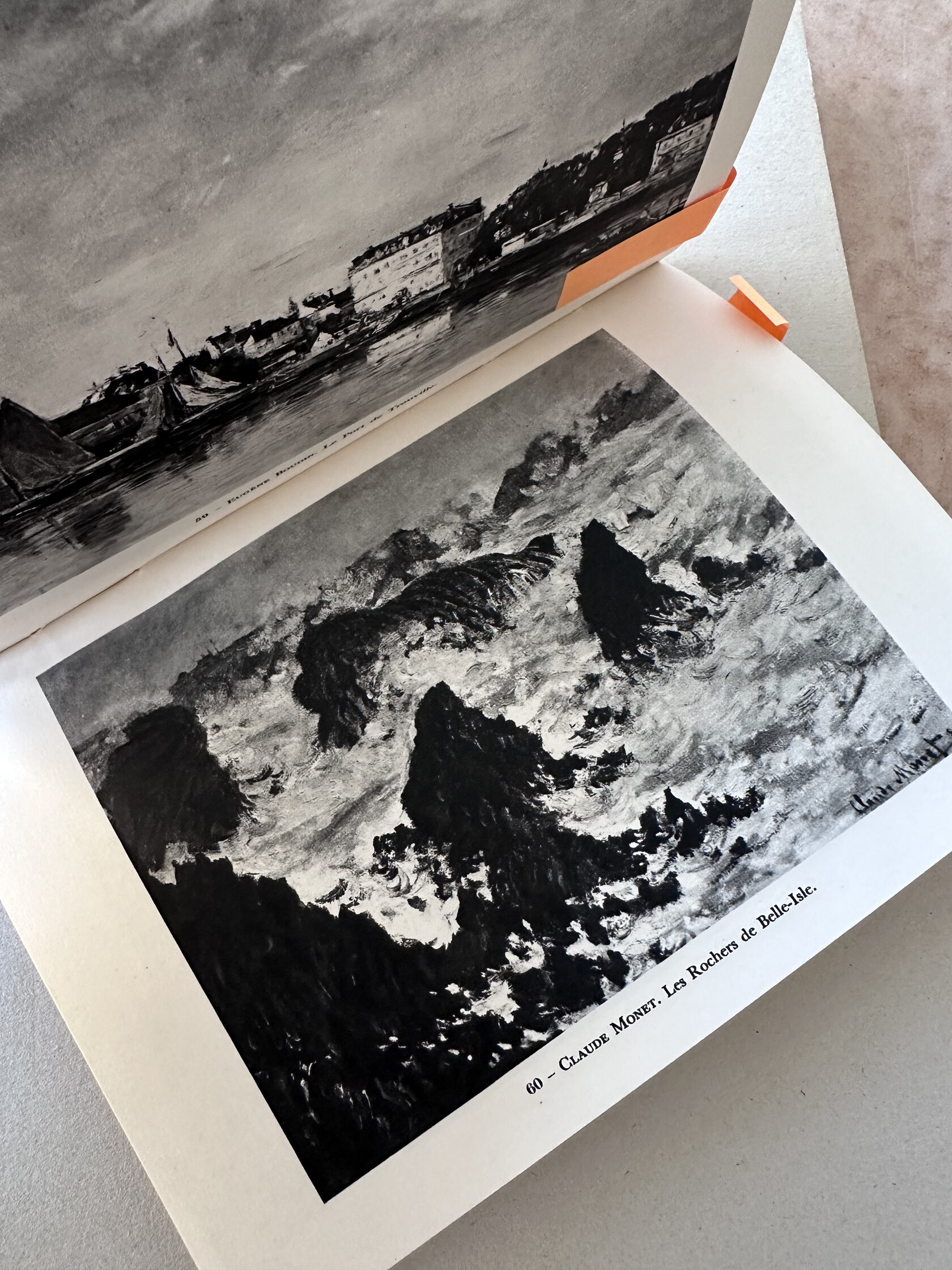
Internal Colonization is an ongoing research-based photo + text project that looks at institutions, architecture, infrastructure, and other visible and not-so-visible aspects and traces of colonialism across the European continent and its immediate surroundings, as imprinted in their cultural landscapes and built environments. Using landscape photography and writing, the project explores the often-overlooked colonial imaginaries, histories, and practices that have been integral to the political history of both Europe proper and its overseas colonial expansions.
COLONIALISM, COAL, AND CULTURE: THE SORBIAN CASE
1/5
German overseas colonialism is widely debated today, and these debates have already had important political and symbolic consequences, such as the return of Benin bronzes, formal apologies for the early-20-century atrocities, or ‘humanitarian’ payments to former colonies. ‘Reappraisal of German colonial history’ and ‘overcoming colonial continuities’ are specifically mentioned in the current government’s coalition agreement. However, the country’s attitudes towards its own minorities that can by any measure be considered colonial rarely make headlines. The Sorbs, one of Germany's four officially recognized indigenous minorities, are a ca. 60,000-strong Slavic-speaking ethnic group also known as Lusatian Serbs, Wends, or Lusatians. The legally established Sorbian settlement area (Sorbisches Siedlungsgebiet in German) has been historically known as Lusatia in English, Łužica or Łužyca in Upper and Lower Sorbian languages, respectively, and as Lausitz in German. This ‘settlement area’, however, does not constitute an autonomous political entity, serving instead to preserve, in terms of language and culture, what’s left of Sorbian identity and ancestral territory. Living under German rule since at least the 10th century, Sorbs have been subjected to varied forms of Germanization, struggling for their survival as a distinct group ever since. This struggle reached an ominous moment under the Nazis who not only denied that a distinct Sorbian identity existed at all but also planned (and fortunately failed) to completely uproot the Sorbian community by deporting all of its members to the German-occupied Alsace to work in coal mining — a special Sorbian calamity as it will become obvious below. After WWII, plans emerged for Lusatia to secede from Germany and either proclaim independence or join Poland or Czechoslovakia. None of these plans ever materialized. In 1950, the East German government granted some autonomy to Lusatia, which was, however, effectively reduced to limited cultural expression centered on conservative folk elements.
Another blow was soon dealt to Sorbian ancestral lands and rural lifestyle as massive surface coal mining began and has been ongoing to this day. Over the last 60 years, more than a hundred Sorbian villages have been demolished, vast areas of agricultural lands and forests destroyed, and thousands of rural residents resettled to larger cities to expand coal extraction. This contributed to further assimilation as communities maintaining the language dissolved and a centuries-old cultural environment was completely erased.*
Another blow was soon dealt to Sorbian ancestral lands and rural lifestyle as massive surface coal mining began and has been ongoing to this day. Over the last 60 years, more than a hundred Sorbian villages have been demolished, vast areas of agricultural lands and forests destroyed, and thousands of rural residents resettled to larger cities to expand coal extraction. This contributed to further assimilation as communities maintaining the language dissolved and a centuries-old cultural environment was completely erased.*
Judging by satellite imagery from just a few years back, there were still fields and dense forests in this area but now there is just this huge brown coal surface mine Nochten. It is slated to swallow up yet another Sorbian village, Miłoraz (Mühlrose), in the coming months. Visible on the horizon is the Boxberg Power Station that mostly runs on brown coal mined in Nochten. The snowy foreground reveals how much coal dust falls on the surrounding area from the mine. January 2024.
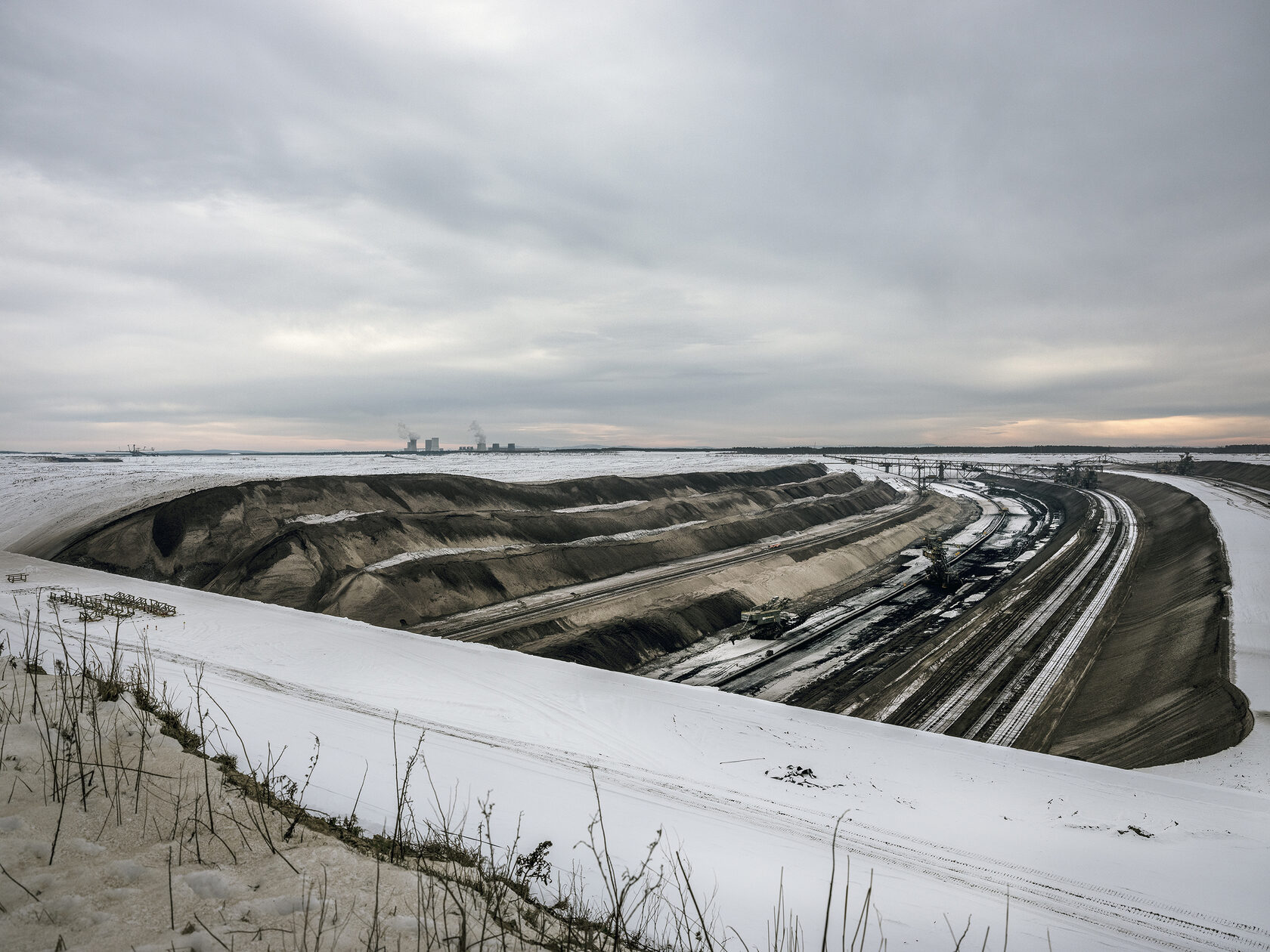
Judging by satellite imagery from just a few years back, there were still fields and dense forests in this area but now there is just this huge brown coal surface mine Nochten. It is slated to swallow up yet another Sorbian village, Miłoraz (Mühlrose), in the coming months. Visible on the horizon is the Boxberg Power Station that mostly runs on brown coal mined in Nochten. The snowy foreground reveals how much coal dust falls on the surrounding area from the mine. January 2024.
Demolition and resettlement of towns or villages to extract more coal is no news in Germany, both West and East, but because of the Sorbian minority, the damage coal has done to the cultural and environmental diversity in Lusatia can be called devastating. Surface mining leaves behind a desert, requiring years of land recultivation and making it impossible to rebuild destroyed villages.
After the full-scale Russian invasion of Ukraine and the ensuing energy supply crisis, Germany had to postpone its energy transition, restart coal-fired power plants, and increase coal mining. As a direct consequence, yet another Sorbian village, Miłoraz (Mühlrose), is being demolished right now, with its community already mostly resettled, to expand coal mining in Nochten, a nearby surface mine operated by mining conglomerate LEAG. Expanding the mine also means clear-cutting dense forests, altering waterways and installing drainage networks in the area, changing its surface and ecosystems forever. Current legislation allows LEAG to run the Nochten mine up until 2038.
After the full-scale Russian invasion of Ukraine and the ensuing energy supply crisis, Germany had to postpone its energy transition, restart coal-fired power plants, and increase coal mining. As a direct consequence, yet another Sorbian village, Miłoraz (Mühlrose), is being demolished right now, with its community already mostly resettled, to expand coal mining in Nochten, a nearby surface mine operated by mining conglomerate LEAG. Expanding the mine also means clear-cutting dense forests, altering waterways and installing drainage networks in the area, changing its surface and ecosystems forever. Current legislation allows LEAG to run the Nochten mine up until 2038.
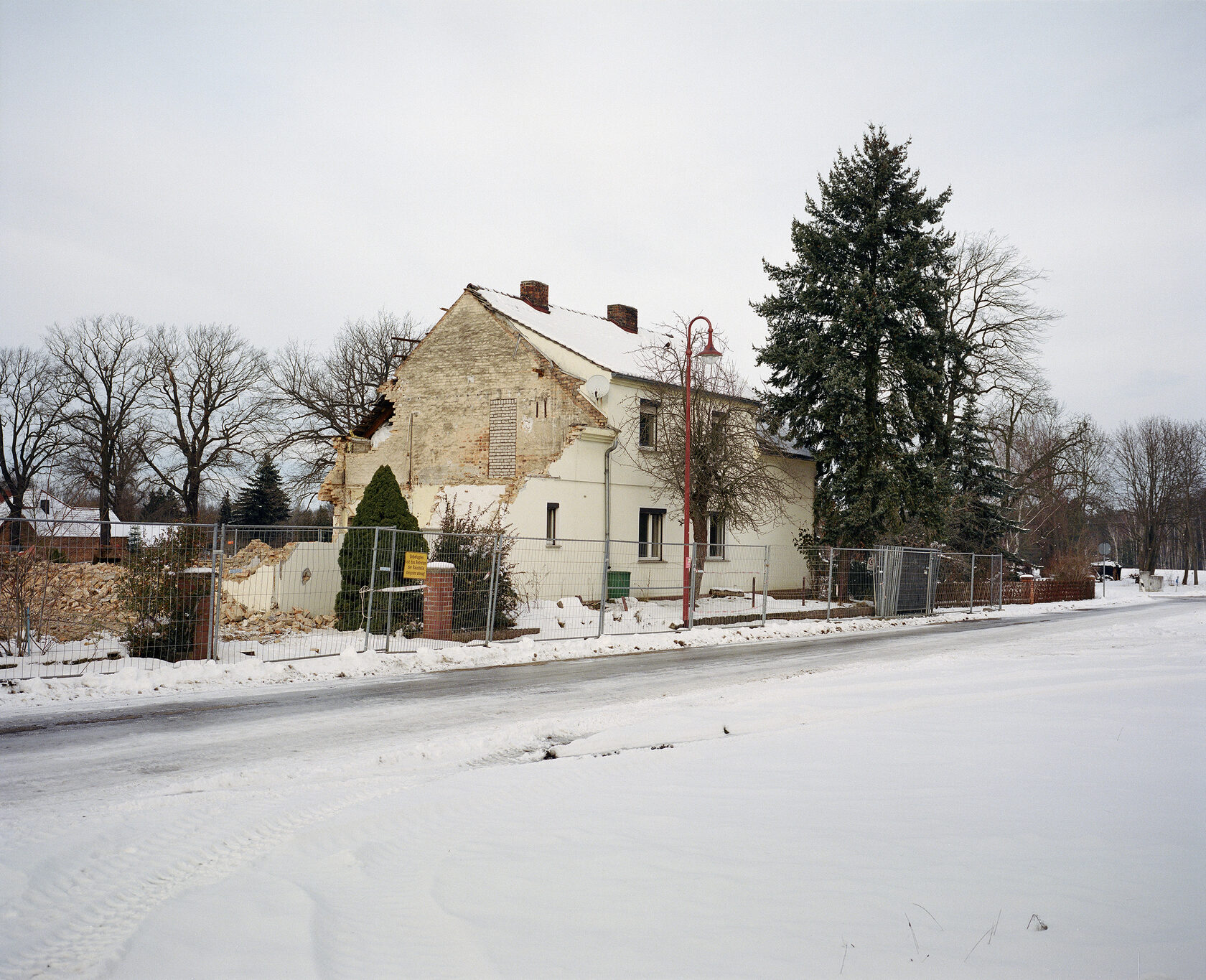
A house being demolished in Miłoraz (Mühlrose), a Sorbian village slated for bulldozing to expand coal mining at Nochten, a nearby surface coal mine. January 2024
Incidentally, German media** reporting on coal mining in Lusatia and, more specifically, on the demolition of Mühlrose fail to even mention its Sorbian name Miłoraz and never refer to the area as Sorbian in general as locals talk to reporters in German, being largely bilingual. One major difference compared to GDR times, however, is that most of the residents were not dispersed one by one to larger cities as before but have at least been resettled as a whole community to a new village built for them from scratch by LEAG some 7 km away.
Demolition equipment and houses being demolished in Miłoraz (Mühlrose). January 2024.
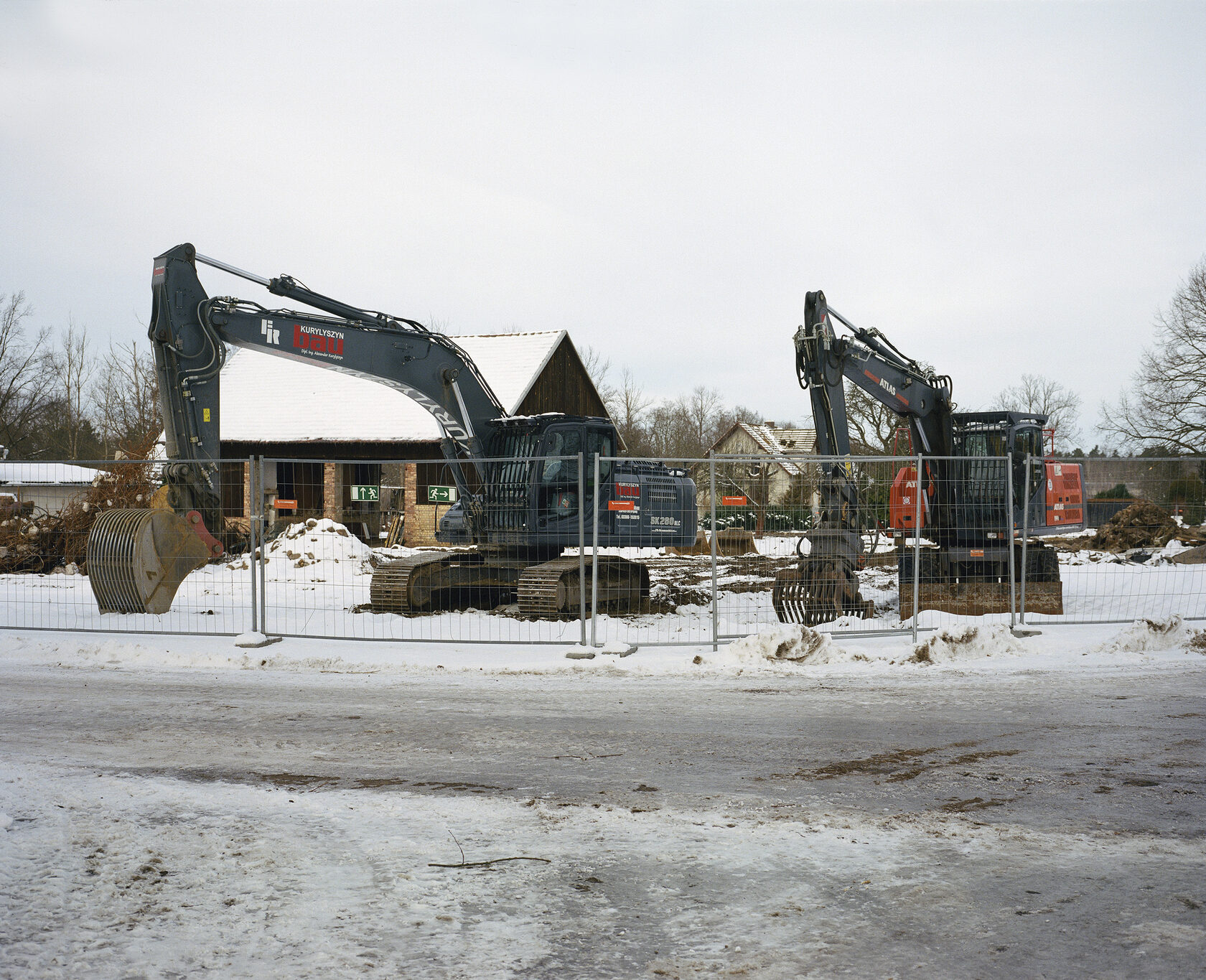
The new community of Miłoraz (Mühlrose) built recently in the open field some 7 km away from the old and soon-to-be-demolished Sorbian village of the same name. For some reason, the name of the new village wasn’t complemented with any mention of Neu or Nowy (New)***, creating an impression that it has always stood here. January 2024.
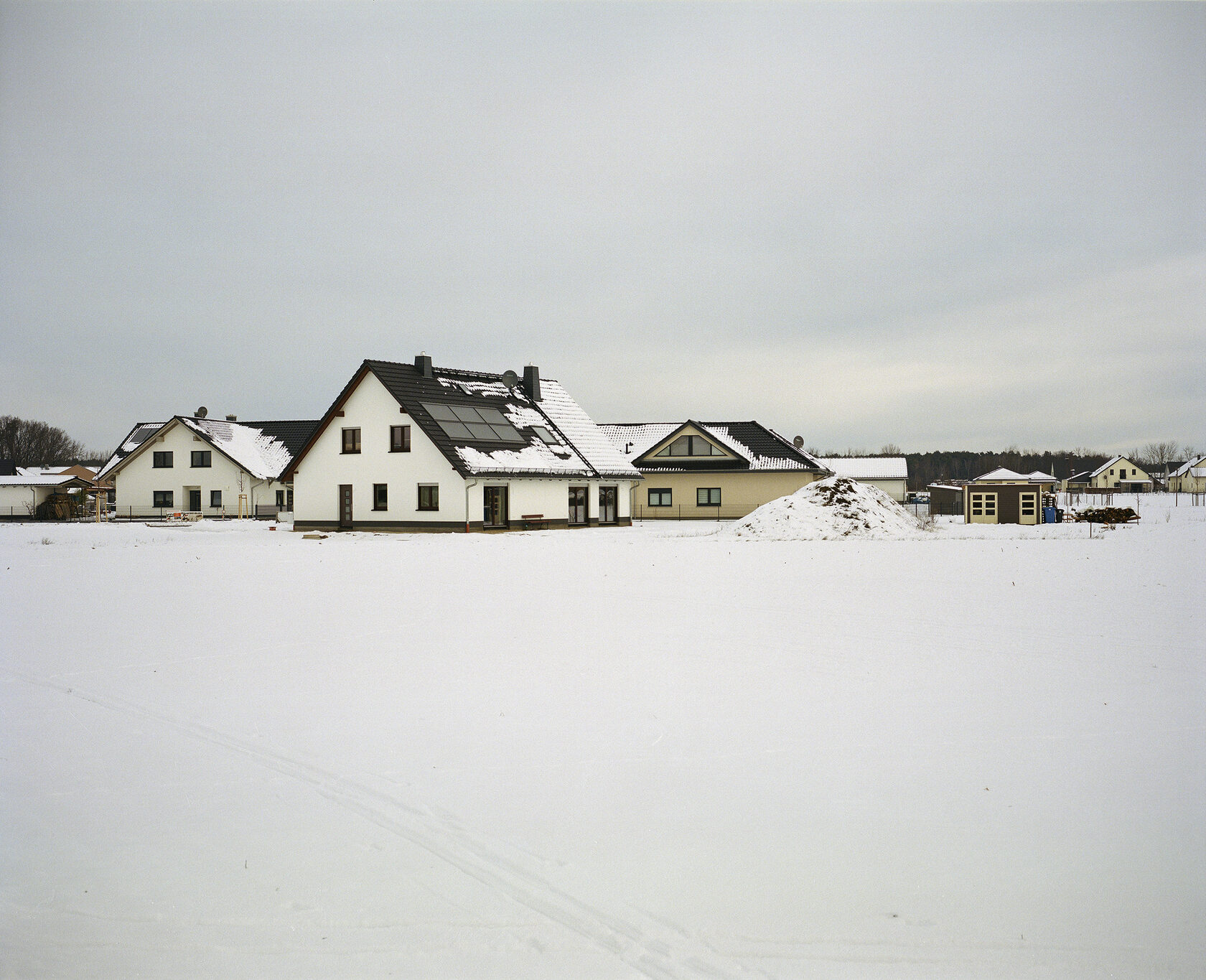
This also clearly shows the limits of cultural autonomy. Minorities can work to preserve their languages or culture, and the Sorbian community have managed to secure important legal provisions to that end, such as bilingual signage and official documentation, teaching of language starting from the kindergarten and cultural associations in Brandenburg and Saxony — the German regions where they live. But lacking political power in a given territory, they are unable to influence major decisions that directly affect their living environment and their future.
* Surface coal mining on a smaller scale has been ongoing in Lusatia since the 19th century but, apart from a few isolated cases, it did not involve the demolition of Sorbian villages en masse up until the 1960s.
** At least those whose stories I was able to read or watch.
*** It’s marked as ‘apartment complex Neu Mühlrose/Nowy Miłoraz’ on Google Maps but the actual road sign only displays Mühlrose/Miłoraz.
** At least those whose stories I was able to read or watch.
*** It’s marked as ‘apartment complex Neu Mühlrose/Nowy Miłoraz’ on Google Maps but the actual road sign only displays Mühlrose/Miłoraz.
PARTS
THE COLONIZED AND THE COLONIZERS IN THE BALTICS
2
3
ANNEX, CO-OPT, RESETTLE, ASSIMILATE
4
SOUTH TYROL: ITALIANIZATION THROUGH INDUSTRIALIZATION
5
BIBLIOGRAPHYN
